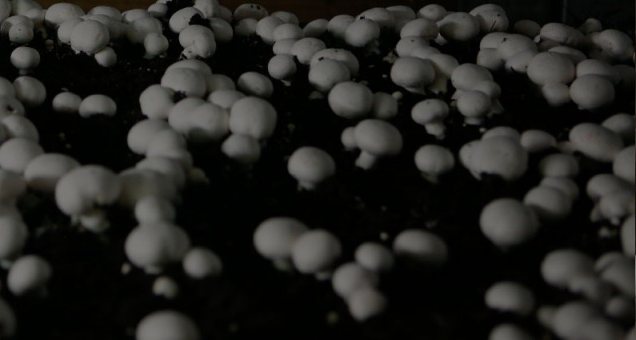
Growing in the dark, powered by the sun? Image: Costa Group
Australia’s largest mushroom producer is expanding operations in South Australia; with solar energy on the cards to help power it.
A $60 million expansion of Costa’s Monarto facility production facility was announced yesterday, which is expected to create 200 new jobs in South Australia’s Murray and Mallee region. Once complete, production at the site is expected to jump from 120 to 240 tonnes of mushrooms a week.
The South Australian Government is pitching in with a $1.8 million grant comprised of equal contributions from the state’s Economic Investment Fund and the Regional Development Fund.
“This expansion means South Australia have the largest and most technologically advanced mushroom production facility in Australia and supports our push to create the industries and jobs of the future,” said SA Premier Jay Weatherill.
Costa has mushroom production facilities in five states, with the Monarto farm having the lowest production cost of all sites.
Solar Power As Part Of Energy Security
Growing, processing and storing mushrooms is an energy intensive business as controlled environment rooms are needed for a high quality and consistent product. As well as the significant energy expense associated with cultivation, production and storage, having a reliable supply of electricity is a major concern.
Back in February, the company mentioned its misgivings connected to energy security; particularly in Victoria. At that time, the company had installed five backup generators at its facilities in Mernda in Victoria and had commenced a review of backup power across all its sites, with critical upgrades undertaken.
In the related February ASX announcement, Costa said it was investigating solar power options, with a focus on the Monarto facility.
It appears those plans are proceeding. An ABC news report about yesterday’s announcement states Costa’s board will soon deal with plans to build a solar farm near the Monarto site, and another solar energy facility after the expansion. There doesn’t seem to be any other publicly available information yet as to the size and nature of the solar farms, or whether they’ll include energy storage.
Construction on the expansion project is expected to begin later this year and be operational in 2018.
If Costa proceeds with going solar, it wouldn’t mark the first time an Australian mushroom farming operation has harvested the sun’s energy to provide electricity. Back in 2014, SJW Mushrooms on the Sunshine Coast in Queensland installed solar panels; which cut the company’s power bills by nearly half.
At that time, the system was expected to pay for itself in 7 years. The cost of solar power has dropped significantly since then, accelerating the payback period on commercial installations.

 RSS - Posts
RSS - Posts



Speak Your Mind